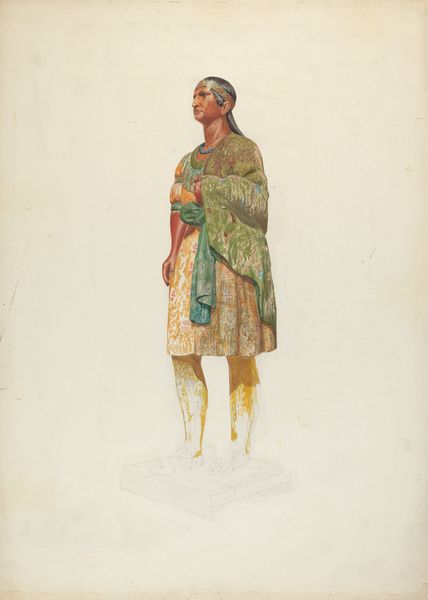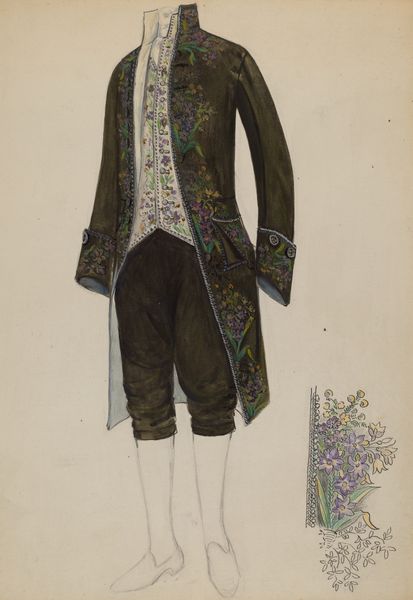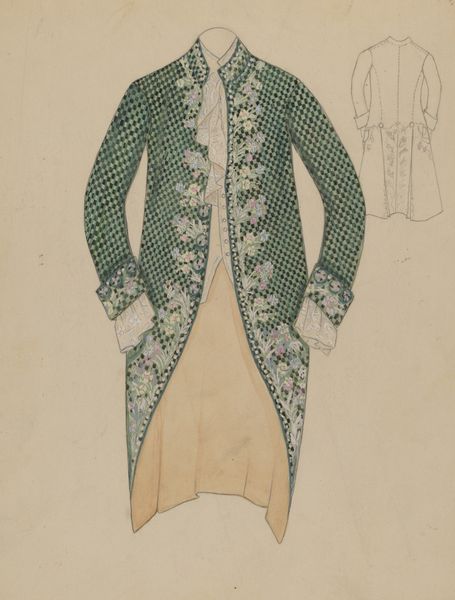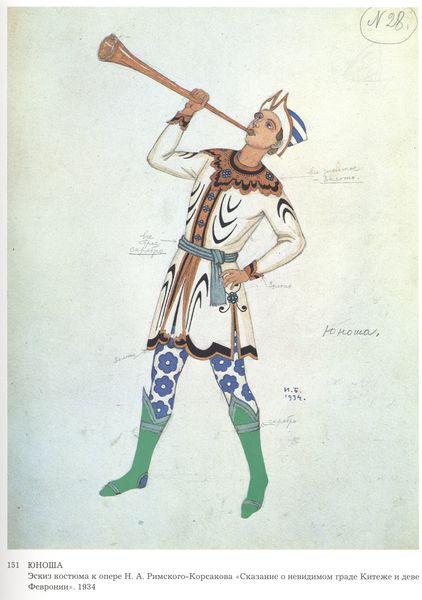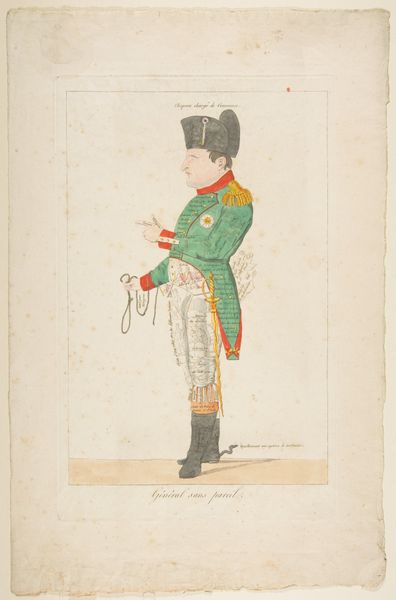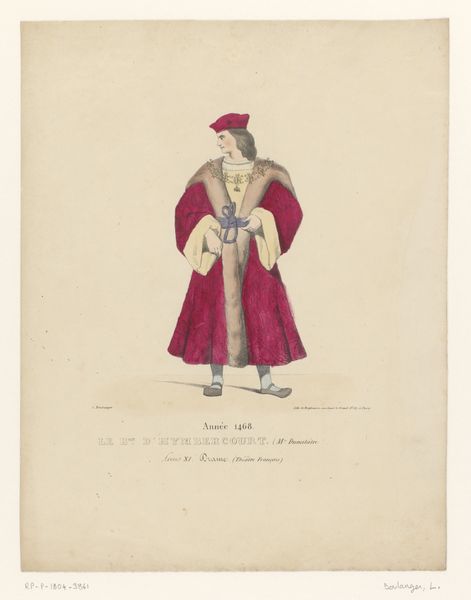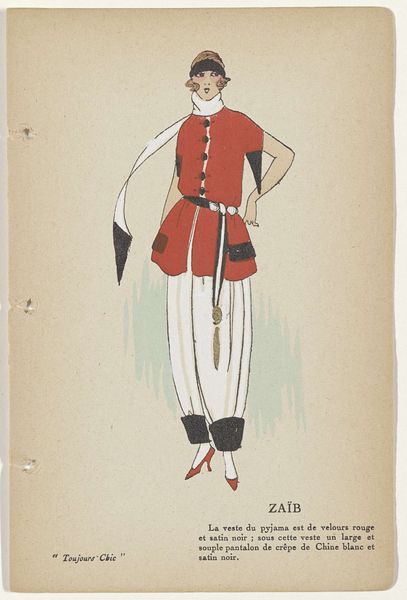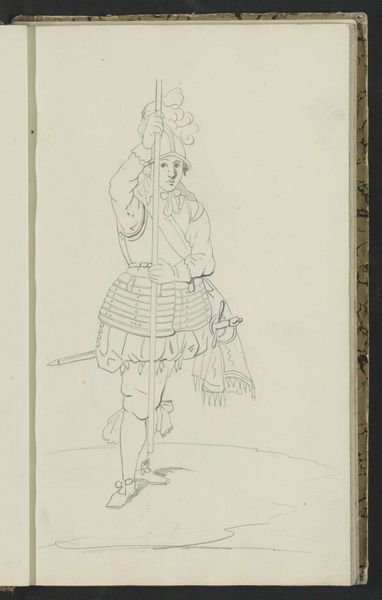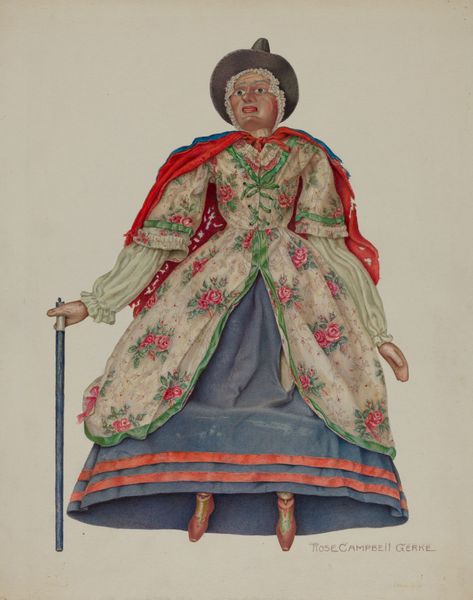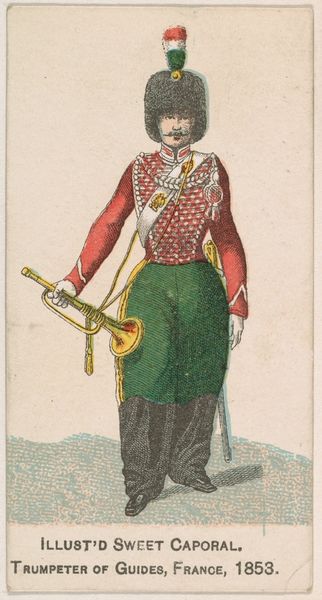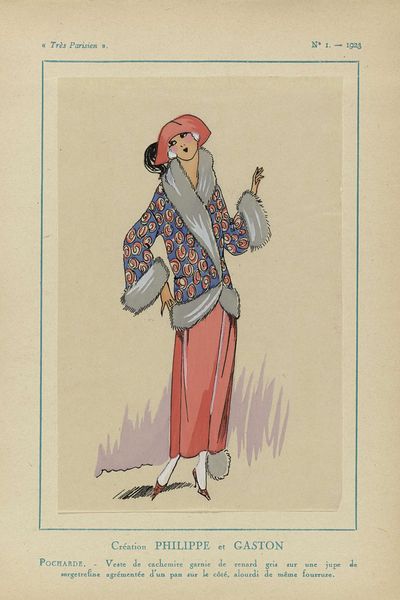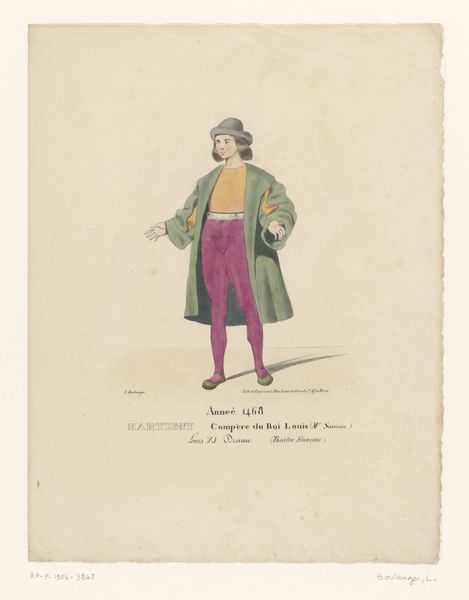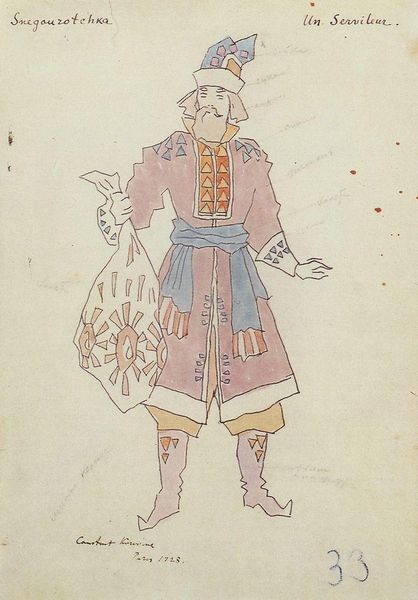
Dimensions: overall: 36 x 25.4 cm (14 3/16 x 10 in.)
Copyright: National Gallery of Art: CC0 1.0
Curator: Here we have Lillian Causey’s “Man’s Suit,” likely created around 1936. It’s rendered in watercolor and drawing. What springs to mind for you, Editor? Editor: Frivolity, dare I say! A cotton-candy dream in watered-down rouge. The meticulous detailing—the frills, the floral, the very confident stance—suggests a playful commentary on wealth, maybe even a jab at masculine affectation. Curator: Absolutely. The labor involved in the creation mirrors the labor involved in producing the clothing of the time, emphasizing how much craft underpinned even aristocratic appearances. Notice the fabric swatch up there on the left. The drawing gives us an impression, yet it’s also presenting possibilities, choices of pattern and form to consider as commodities. Editor: It’s like a paper doll, waiting for the world, but with an attitude. I imagine Causey saw the theatricality in everyday life—these historical recreations, if you will, offered a means to comment on the stage of modern society too. It has that slightly sad, knowing glamour, that almost feels... vulnerable? Curator: That's interesting because fashion plates such as this had several lives, often appearing in magazines like "Harper's Bazaar," catering to the upper crust while also educating burgeoning manufacturers on what was considered cutting-edge style. "Vulnerable" makes sense because the drawing reveals the choices, labor, and context that mass marketing elides. Editor: Almost like the picture is blushing, embarrassed to show itself, maybe knowing its beauty and value are so fleeting, caught on paper in fading color. Curator: The piece reveals the inherent connection between material culture, representation, and societal performance in really compelling ways. And the delicate rendering draws attention to the ephemeral and highly consumable nature of the fashions represented, hinting at issues like garment worker conditions. Editor: The outfit exists in a state of permanent becoming, so to speak. More a question, "could this exist, maybe this is beauty?" than any simple, declarative "look!" But your point about production truly colors my interpretation now! Curator: It makes me look at historical representation from another angle. Thanks. Editor: And it does for me as well; let's sashay on, shall we?
Comments
No comments
Be the first to comment and join the conversation on the ultimate creative platform.

